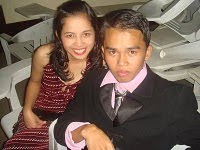*
Make two to three covers for bulletin boards at once, placing one on top of the other. When it is time to change displays, simply pull off the top display, revealing the next one beneath it.
*
At the end of the school year whenever students have some free time, let them create a bulletin board for you. It will be ready for the fall, welcoming the new class back to school. You might want to have them cover it with newspaper to protect it during the summer.
*
Rather than repeatedly correcting students for the same errors, create a bulletin board display explaining the error and the correct procedures.
*
From a roll of colored paper, tear a piece to the approximate size of the bulletin board. Mold to the bulletin board by hand and temporarily pin it to the board. With a small pin or razor knife, tear or cut along edges to remove the excess paper. You are ready to place objects and letters on the board.
*
You need not decorate every bulletin board. Use blank ones for announcements, posters, student work, newspapers, magazine articles, etc. Use some class time to have students brainstorm ideas for bulletin boards.
*
Generate graphics and letters with computers. Special software is readily available in most schools for printing banners and posters. Use letters of various sizes. Large ones grab the students' attention and get them to read the rest.
*
Give your students time and materials to cut out bulletin board letters of various styles and sizes. Store these in envelopes for future use.
*
Project coloring book images onto large sheets of paper taped to the wall. Trace and color the images to make large characters to include in your bulletin boards.
*
Use some bulletin boards to teach or reinforce a skill or concept.
*
Reserve one section of a bulletin board for students to use to post interesting articles, invitations, unusual quotations, pictures, cartoons, and other items of interest.
*
Experiment with three-dimensional bulletin boards. Objects such as feathers, dried flowers, discarded ties, masks, hats, and costume jewelry can all be incorporated into your bulletin boards. Strive to use multiple textures to make the bulletin boards more attractive.
*
Develop interactive bulletin boards. Use pockets and flaps to hide answers to questions displayed on the board. Post a daily question, riddle, or puzzle for students to explore when they enter the room. Some displays might pose a question to which students write their answers or estimate in a block on the bulletin board. These are especially valuable if they relate to a topic to be studied that day.
*
Hang a clothesline across one wall of your room. Attach students' papers to the line with clothespins.
*
Velcro or flannel boards can be incorporated into manipulative boards that invite students to experiment. Bulletin boards can be dynamic, inviting students to interact and reform the display. Self-checking questions can be displayed with answers covered by flaps.
*
Think of creative materials and ideas to incorporate into unique borders. Discarded fabric, game pieces, silk flowers, ribbons, leaves, greeting cards, or photographs can all be incorporated into attractive borders.
*
To help maintain interest, alter some part of a bulletin board every day or once a week. Changing a featured quotation or startling statistic each day keeps the students motivated to keep looking at it. Remember, a bulletin board is more than just wall decoration. It can be a great motivational device and instructional aid.
Subscribe to:
Post Comments (Atom)

No comments:
Post a Comment